2017-09-14 - Nº 124

Editorial
Esta é a Newsletter Nº 124 que se apresenta com o mesmo formato que as anteriores. Se gostar da Newsletter partilhe-a!
Todas as Newsletters encontram-se indexadas no link.
Esta Newsletter tem os seguintes tópicos:
Faz hoje anos que nascia, em 1698, Charles Du Fay. Este químico Francês, nascido em Paris, ficou conhecido por ter descoberto a existência de dois tipos de electricidade aos quais chamou de "vítreo" e "resinoso" (mais tarde conhecidos como carga positiva e negativa, respectivamente). Ele notou a diferença entre condutores e isoladores, chamando-os de "electricidade" e "não eléctrica" pela sua capacidade de produzir electrificação por contacto. Ele também descobriu que objectos igualmente carregados se repeliam e que objectos muito diferentes se atraíam.
Faz também anos hoje que nasciam, em 1847, William Edward Ayrton e Pavel Yablochkov. O primeiro era um engenheiro electrotécnico inglês que foi pioneiro na educação técnica. Ele colaborou com John Perry, e suas inúmeras invenções incluem um triciclo eléctrico (1882), o primeiro amperímetro portátil prático, o voltímetro e outros instrumentos para medição eléctrico. O segundo foi um engenheiro electrotécnico russo que ficou conhecido pela invenção de uma lâmpada de arco melhorada, conhecida como a vela de Yablochkov (1876). Sendo barata, foi usada em edifícios públicos e para iluminar ruas durante várias décadas antes do advento da iluminação incandescente, o que exigia muito menos manutenção. Uma luz branca brilhante foi produzida por um arco elétrico entre duas hastes de carbono paralelas, usando corrente alternada para garantir que as hastes se vaporizassem na mesma proporção. As velas de Yablochkov foram usadas a partir de 1877 em Paris e foram instaladas em Londres ao longo de Victoria Embankment (1878), seguido do mercado de peixe Billingsgate, da Mansion House e do Viaducto Holborn.
Na semana que passou a sonda Cassini enviou as ultimas imagens da sua longo viagem que se iniciou no final do século passado à cerca de 20 anos. Depois de 7 anos a viajar até ao planeta Saturno, esteve a orbitar este durante 13 anos. Durante o próximo dia 15 irá entrar na atmosfera de Saturno e despenhar-se-á. Durante o tempo em que esteve em orbita, observou leituras estranhas no pólo sul de Enceladus, a sexta maior lua de Saturno. Depois de duas passagens adicionais os cientistas verificaram que jatos de vapor de agua eram expelidos vindos debaixo da crosta da lua. Concluindo a existência de um oceano de agua salgada debaixo da crosta de Enceladus. Outra das grandes razões da missão da Cassini era a exploração da lua Titan, a maior de Saturno e é cerca de 50% maior que a Lua terrestre. Esta lua tem uma atmosfera e é o único objecto no espaço além do planeta Terra onde há evidência clara de corpos estáveis de líquido superficial. Para que o conhecimento sobre esta lua foi ainda mais aprofundado a sonda Cassini transportou uma sonda chamada Huygens, feita pela Agência Espacial Europeia. A sonda aterrou em Titan a 14 de Janeiro de 2005, tornando-se a primeira nave espacial a aterrar no sistema solar exterior. Durante sua descida de 2,5 horas à superfície, Huygens reuniu medições detalhadas da atmosfera de Titan e deu aos cientistas o primeiro olhar de perto sobre a superfície de Titan, revelando leitos de rios secos e lagos na crosta. Na sua viagem foi também possível obter informação detalhada sobre os anéis e a sua composição, assim como a sua origem. Foi igualmente possível observar o famoso hexágono de Saturno - o fluxo de jacto de seis lados no pólo norte do planeta que abrange mais do dobro da largura da Terra. Demorou bastante tempo antes da Cassini poder ver o hexágono com luz visível, já que o fluxo de jactos estava principalmente coberto pela sombra nos primeiros cinco anos da missão. Isso ocorre porque Saturno leva muito mais tempo para orbitar o Sol do que a Terra, então as estações duram muito mais. Mas em 2009, a luz solar finalmente iluminou o hemisfério norte, permitindo a Cassini observar. A sonda finalmente viu o que estava no centro do hexágono: um furacão muito semelhante aos da Terra, mas com um olho cerca de 50 vezes maior do que uma tempestade média. Foi até observado um segundo vórtice parecido com um furacão que se aproximava da borda da corrente de jacto. Os investigadores descobriram depois que a distância do Saturno ao Sol e sua composição atmosférica permitem que os fluxos de jacto se formem em formas geométricas, mas o hexágono ainda é um pouco misterioso: não está claro por que o pólo sul também não possui um hexágono ou o que permite o fluxo de jactos durarem tanto tempo. Saturno tem mais de 60 luas, algumas das quais foram descobertas pela Cassini. A sonda detectou até seis novas luas no planeta, bem como potenciais pequenas luas que se movem através dos anéis de Saturno, deslocando partículas acima e abaixo das bandas. Fica aqui um link para um Video àcerca dos últimos momentos da sonda.
Esta semana a Apple apresentou a sua mais recente família de Smartphones - iPhone X. Contendo características inovadoras, incluindo uma tela de super retina, sistema de câmara TrueDepth, identificação de rosto e Bionic Chip com o Neural Engine. Com um design de vidro com uma tela de 5,8 polegadas Super Retina. Das principais novidades destaca-se o carregamento sem fio e uma câmara traseira melhorada com estabilização de imagem dupla óptica. Permite igualmente ao utilizador desbloquear, autenticar e pagar usando Face ID, habilitado pela nova câmara TrueDepth. O iPhone X chegará aos clientes no inicio de Novembro.
Também ficámos a saber esta semana que a China está a construir a maior instalação de pesquisa quântica do mundo para desenvolver um computador quântico e outras formas "revolucionárias" de tecnologia que podem ser usadas pelos militares para code-breaking ou submarinos furtivos, de acordo com cientistas e autoridades envolvidas no projecto. O Laboratório Nacional de Ciências da Informação Quântica estará localizado em um local de 37 hectares ao lado de um pequeno lago na província de Hefei, Anhui.
Na Newsletter desta semana apresentamos diversos projetos de maker assim como um modelo 3D que poderá ser útil. É apresentado também a revista newelectronics de 12 Setembro de 2017.
 João Alves ([email protected])
João Alves ([email protected])
O conteúdo da Newsletter encontra-se sob a licença  Creative Commons Attribution-NonCommercial-ShareAlike 4.0 International License.
Creative Commons Attribution-NonCommercial-ShareAlike 4.0 International License.
Novidades da Semana

Cassini Makes its 'Goodbye Kiss' Flyby of Titan
_"NASA's Cassini spacecraft is headed toward its Sept. 15 plunge into Saturn, following a final, distant flyby of the planet's giant moon Titan. The spacecraft made its closest approach to Titan today at 12:04 p.m. PDT (3:04 p.m. EDT), at an altitude of 73,974 miles (119,049 kilometers) above the moon's surface. The spacecraft is scheduled to make contact with Earth on Sept. 12 at about 6:19 p.m. PDT (9:19 p.m. EDT). Images and other science data taken during the encounter are expected to begin streaming to Earth soon after. Navigators will analyze the spacecraft's trajectory following this downlink to confirm that Cassini is precisely on course to dive into Saturn at the planned time, location and altitude. This distant encounter is referred to informally as "the goodbye kiss" by mission engineers, because it provides a gravitational nudge that sends the spacecraft toward its dramatic ending in Saturn's upper atmosphere. [...]

The future is here: iPhone X
_"Packed with Innovative Features Including a Super Retina Display, TrueDepth Camera System, Face ID and A11 Bionic Chip with Neural Engine Apple today announced iPhone X, the future of the smartphone, in a gorgeous all-glass design with a beautiful 5.8-inch Super Retina display, A11 Bionic chip, wireless charging and an improved rear camera with dual optical image stabilization. iPhone X delivers an innovative and secure new way for customers to unlock, authenticate and pay using Face ID, enabled by the new TrueDepth camera. iPhone X will be available for pre-order beginning Friday, October 27 in more than 55 countries and territories, and in stores beginning Friday, November 3. “For more than a decade, our intention has been to create an iPhone that is all display. The iPhone X is the realization of that vision,” said Jony Ive, Apple’s chief design officer. “With the introduction of iPhone ten years ago, we revolutionized the mobile phone with Multi-Touch. [...]

China building world’s biggest quantum research facility
_"China is building the world’s largest quantum research facility to develop a quantum computer and other “revolutionary” forms of technology that can be used by the military for code-breaking or on stealth submarines, according to scientists and authorities involved in the project. The National Laboratory for Quantum Information Science will be located on a 37-hectare site next to a small lake in Hefei, Anhui province. Some time this month developers will be invited to bid for a contract to construct the site, according to an article in Hefei Evening News, a daily newspaper run by the city government on Thursday. Pan Jianwei, China’s lead quantum scientist who was playing a key role in the project, told local officials at a briefing in May that technology developed in the facility would be of immediate use to the armed forces, according to Anhui Business Daily newspaper. Quantum metrology, which measures small variations in physical parameters such as gravity with unprecedented accuracy, could significantly improve submarines’ stealth operations. A submarine with a quantum navigation system could operate underwater for more than three months without the need to surface for positioning satellite signals. [...]
Outras Notícias
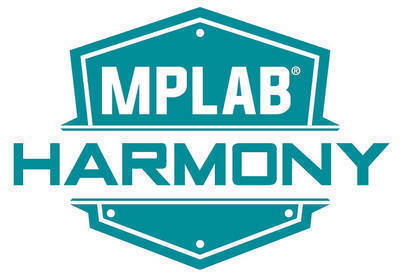
Microchip’s MPLAB® Harmony Software Upgraded to Include More Efficient Code and Enhanced Graphics Development Tools
_"MPLAB® Harmony 2.0, the fully featured firmware development framework for PIC32 microcontrollers, is now available as a free download from Microchip Technology Inc. (NASDAQ: MCHP). The significant update to the award-winning software platform enables customers to create smaller and more efficient code equaling faster and more cost-effective devices. In addition to better quality code, the update includes numerous new tools that work within the MPLAB X Integrated Development Environment (IDE). MPLAB Harmony is a free software framework and tool suite within Microchip’s MPLAB X IDE and also works with MPLAB XC32 compilers. The MPLAB Harmony framework operates with PIC32 solutions and offers libraries of peripherals, drivers and system services to support application development. The software also contains board support packages for PIC32 development boards. [...]

Samsung Strengthens Advanced Foundry Portfolio with New 11nm LPP and 7nm LPP with EUV Technology
_"Samsung Electronics, the world leader in advanced semiconductor technology, today announced it has added 11-nanometer (nm) FinFET process technology (11LPP, Low Power Plus) to its advanced foundry process portfolio, offering customers with an even wider range of options for their next-generation products. Through further scaling from the earlier 14LPP process, 11LPP delivers up to 15 percent higher performance and up to 10 percent chip area reduction with the same power consumption. In addition to the 10nm FinFET process for mobile processors in premium flagship smartphones, the company expects its 11nm process to bring differentiated value to mid- to high-end smartphones. The new process technology is scheduled to be ready for production in the first half of 2018. Samsung also confirmed that development of 7LPP with EUV (extreme ultra violet) lithography technology is on schedule, targeting its initial production in the second half of 2018. Since 2014, Samsung has processed close to 200,000 wafers with EUV lithography technology and, building on its experience, has recently seen visible results in process development such as achieving 80 percent yield for 256 megabit (Mb) SRAM (static random-access memory). [...]

Panasonic Develops 3D LiDAR Sensor Enabling 3D Detection of Distances with Wide Angle of View
_"Panasonic's new 3D LiDAR enables variable detection settings for viewing angles and scanning speed. This new product contributes to the wide-spread use of autonomous robots that navigate inside or outside facilities with moving objects, including people. Panasonic Corporation announced today that it has developed a 3D LiDAR [1] sensor that accurately measure the direction of and distance to objects with a wide angle of view, which is critical for autonomous operation of mobile robots. Employing Panasonic's propriety laser-scanning technology, this 3D LiDAR is capable of scanning the laser as wide as up to 60 degrees vertically and 270 degrees horizontally to achieve stable operation of autonomous robots. Sample shipments will start in January 2018. Panasonic will exhibit the 3D LiDAR at "CEATEC JAPAN 2017" at Makuhari Messe, Chiba, Japan, from October 3 to 6, 2017 The wide scanning angle of the newly developed 3D LiDAR helps the detection of objects on the ground precisely as well as the roughness of the ground surface. [...]

La TABLA
"La Tabla is a magical table—put things on it and they come to life. Make music and animations. Play games. Design your own pinball tables. Use your body, your friends, paper, drawings, game pieces—whatever strikes your fancy. " [...]
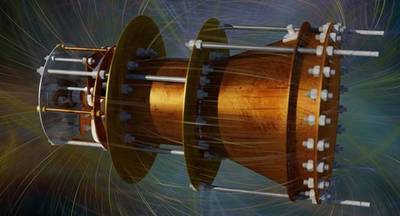
China Unveils Physics-Defying Engine for Deep Space Exploration
_"Chinese scientists claim they have developed a working model of a microwave engine, which defies the laws of conventional physics, CCTV-2 reported. The TV channel provided no details of the EmDrive microwave engine, saying only that it would soon be tested in space. The EmDrive is built around a microwave-generating magnetron and a resonator, which accumulates the energy of their fluctuations. This generates thrust, which can’t be explained by the conventional energy conservation law. The magnetron pushes microwaves into a closed truncated cone, driving them against its short end thus propelling the craft forward without producing any exhaust. This differs from the type of propulsion currently used by spacecraft, which burn large quantities of fuel to generate a massive amount of energy to rocket the craft into space. [...]
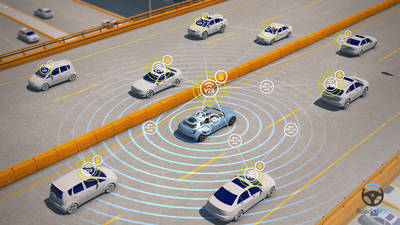
NXP Launches World’s First Scalable, Single-Chip Secure Vehicle-to-X Platform
_"NXP Semiconductors N.V. (NASDAQ:NXPI), the world's largest supplier of automotive semiconductor solutions, has expanded its leadership in secure vehicle-to-everything communications (V2X) with its next generation RoadLINK™ solution. The new NXP SAF5400 is the world's first automotive qualified, high-performance single-chip DSRC modem. Its unique scalable architecture, new industry-leading security features, and leading edge RFCMOS and software defined radio (SDR) technologies offer OEMs flexible options for cross-regional secure V2X adoption and field upgradeability. V2X technology allows vehicles to communicate with other cars, infrastructure and vulnerable road users to increase driver safety and smooth out the autonomous driving experience. The DSRC/802.11p version of V2X delivers minimum latency for real-time communication and an operating range that exceeds 1 mile even in areas where cellular network connections are not available. DSRC also provides dedicated secure safety channel operation to enable the secure communication of safety messages and other data in real time, forming an essential part of the suite of autonomous driving sensors for today's connected cars and trucks. [...]

CircuitPython 2.0.0!
_"2.0.0 is here! 2.0.0 updates CircuitPython to a MicroPython 1.9.2 foundation that we built awesome data storage related functionality on. Now you can write files to the file system and, on some boards, write raw bytes to a non-volatile section of memory. Thank you to all CircuitPython and MicroPython contributors. Second, thank you to all who tested and found issues with 2.0.0 betas: @ladyada, @ntoll, @deshipu, @willingc, @jerryneedell, @KurticusMaximus, @kattni, @cledic, @diogoviannaaraujo, @cpunches, @eighthree, @joeynelson, @mrmcwethy, @fabitencourt, @hukuzatuna. From discord: scruffynerf, Sigafoos. [...]

Toshiba Electronic Devices & Storage Corporation Announces New 1TB Hard Disk Drive for Mobile Client Storage Applications
_"Toshiba Electronic Devices & Storage Corporation today announced its new MQ04 Series 1TB[1] HDD, designed for applications that require high capacity, highly durable storage, including notebook PCs, game systems, all-in-one slim-line desktop systems and set-top box appliances. Shipments of the MQ04 1TB model start today, with general availability. The MQ04 Series single-disk model offers the storage industry’s largest capacity[2] per disk for a 2.5-inch HDD, and delivers 1TB of data storage capacity in an ultra-compact 2.5-inch form factor only 7mm high. With a 6 Gbit/s SATA interface[3], 5,400 rotational speed and a large 128MiB[4] buffer, the new drive is engineered for consistent seek and transfer rate performance, and improves sustained transfer rate performance by 34 percent over the previous 1TB MQ01 generation model. It is expected to meet strong market demand in the client HDD market for high performance, large capacity storage for applications such as notebook PCs, and for recording high resolution images and data. Toshiba Group positions HDD as a focus business area within its storage business. [...]

New 8-bit Microcontroller from STMicroelectronics Delivers Uniquely Flexible Feature Set in Space/Cost-Saving 8-Pin Package
_"STMicroelectronics is extending choice and freedom for budget-conscious designers by introducing its new 8-bit STM8S001 microcontroller (MCU) in the economical SO-8 package. New 8-bit Microcontroller from STMicroelectronics Delivers Uniquely Flexible Feature Set in Space/Cost-Saving 8-Pin Package Unlike most rivals, the STM8S001 has I2C, UART, and SPI interfaces, giving unusually versatile connectivity options. With a generous 8KB Flash memory, 1KB RAM, 128-byte EEPROM, and 3-channel 10-bit ADC also on-chip, it delivers key features of ST’s most popular STM8S003 MCU in a space-saving, low-pin-count device. Additional features include five GPIOs, one 8-bit and two 16-bit timers, and an internal RC oscillator that allows flexible clock control from 128kHz to 16MHz. There is also a Single-Wire Interface Module (SWIM) for programming and debugging. Fully specified from -40°C to125°C and featuring the modern and efficient STM8 core operating at 16MHz, the STM8S001 is ideal for industrial devices like smart sensors and lighting controls, as well as consumer products such as toys, small appliances, personal electronics, PC peripherals, battery chargers, and many others. [...]

Western Digital Ships 12TB WD Gold Hard Drives To Meet Growing Capacity Requirements Of Big Data Applications
_"Western Digital Corporation (NASDAQ: WDC), a global data storage technology and solutions leader, has expanded its WD Gold® hard drive lineup to include a 12TB capacity model, designed to address demanding Big Data workloads. The new high-capacity hard drives provide for increased storage density in a range of enterprise and cloud storage applications. Whether data comes in the form of confidential consumer data, healthcare records or business intelligence, WD Gold hard drives provide a no-compromise storage solution that modern day IT managers need. “As data growth continues unabated, retaining more of that data and generating meaningful insight from it becomes increasingly important,” said Brendan Collins, vice president, Devices business unit, Western Digital. “Businesses that most effectively extract value from operational data are able to make smarter decisions, improve business outcomes and ultimately gain a competitive advantage.” The WD Gold hard drives are designed to store users’ most precious data. Designed for heavy-workload, high-vibration server environments, the new drives have a reliability rating (2.5 million hours MTBF) that is among the highest in WD’s hard drive portfolio. [...]

First titanium 3D-printed part installed into serial production aircraft
"Airbus completed for the first time the installation of a titanium 3D-printed bracket on an in-series production A350 XWB. The bracket, built using additive-layer manufacturing (ALM) technologies (also known as 3D-printing), is part of the aircraft pylon, the junction section between wings and engines. Additive-layer manufacturing “grows” products from a fine base material powder – such as aluminium, titanium, stainless steel and plastics – by adding thin layers of material in incremental stages, which enables complex components to be produced directly from computer-aided design (CAD) information. 3D-printed parts are already flying on some of Airbus A320neo and A350 XWB test aircraft. These include metal printed cabin brackets and bleed pipes. " [...]

Opening Up Java EE
_"In a previous post, we announced that Oracle was beginning to explore moving Java EE technologies to an open source foundation in order to make the process of evolving these standards more agile, flexible and open. Since mid-August, we’ve had many discussions with other vendors, community members and open source foundations in order to move the process forward. Here’s an update on the progress we have made so far. First, we have reached out to IBM and Red Hat, the other largest contributors to the Java EE platform, to solicit their support for this new direction. Oracle, IBM and Red Hat are collaborating on an ongoing basis to refine an approach that we can collectively support. We've made good progress on this front, and expect to continue to work together to make this transition successful for all parties. [...]
Ciência e Tecnologia

Researchers develop 3-D-printed biomaterials that degrade on demand
_"The temporary structures, which can be degraded away with a biocompatible chemical trigger, could be useful in fabricating microfluidic devices, creating biomaterials that respond dynamically to stimuli and in patterning artificial tissue. PROVIDENCE, R.I. [Brown University] — Brown University engineers have demonstrated a technique for making 3-D-printed biomaterials that can degrade on demand, which can be useful in making intricately patterned microfluidic devices or in making cell cultures than can change dynamically during experiments. “It’s a bit like Legos,” said Ian Wong, an assistant professor in Brown’s School of Engineering and co-author of the research. “We can attach polymers together to build 3-D structures, and then gently detach them again under biocompatible conditions.” The research is published in the journal Lab on a Chip. The Brown team made their new degradable structures using a type of 3-D printing called stereolithography. The technique uses an ultraviolet laser controlled by a computer-aided design system to trace patterns across the surface of a photoactive polymer solution. [...]

High-Frequency Chip Brings Researchers Closer to Next Generation Technology
_"A novel, high-frequency electronic chip potentially capable of transmitting tens of gigabits of data per second — a rate that is orders of magnitude above the fastest internet speeds available today — has been developed by engineers at the University of California, Davis. Omeed Momeni, an assistant professor of electrical and computer engineering at UC Davis, and doctoral student Hossein Jalili designed the chip using a phased array antenna system. Phased array systems funnel the energy from multiple sources into a single beam that can be narrowly steered and directed to a specific location. “Phased arrays are pretty difficult to create, especially at higher frequencies,” Momeni said. “We are the first to achieve this much bandwidth at this frequency.” The chip prototyped by Momeni and Jalili successfully operates at 370 GHz with 52 GHz of bandwidth. For comparison, FM radio waves broadcast between 87.5 and 108 MHz; 4G and LTE cellular networks generally function between 800 MHz and 2.6 GHz with up to 20 MHz of bandwidth. [...]

Fast magnetic writing of data
_"Magnetic data storage has long been considered too slow for use in the working memories of computers. Researchers at ETH have now investigated a technique by which magnetic data writing can be done considerably faster and using less energy. For almost seventy years now, magnetic tapes and hard disks have been used for data storage in computers. In spite of many new technologies that have been developed in the meantime, the controlled magnetization of a data storage medium remains the first choice for archiving information because of its longevity and low price. As a means of realizing random access memories (RAMs), however, which are used as the main memory for processing data in computers, magnetic storage technologies were long considered inadequate. That is mainly due to its low writing speed and relatively high energy consumption. [...]

How neural networks think
_"Artificial-intelligence research has been transformed by machine-learning systems called neural networks, which learn how to perform tasks by analyzing huge volumes of training data. During training, a neural net continually readjusts thousands of internal parameters until it can reliably perform some task, such as identifying objects in digital images or translating text from one language to another. But on their own, the final values of those parameters say very little about how the neural net does what it does. Understanding what neural networks are doing can help researchers improve their performance and transfer their insights to other applications, and computer scientists have recently developed some clever techniques for divining the computations of particular neural networks. But, at the 2017 Conference on Empirical Methods on Natural Language Processing starting this week, researchers from MIT’s Computer Science and Artificial Intelligence Laboratory are presenting a new general-purpose technique for making sense of neural networks that are trained to perform natural-language-processing tasks, in which computers attempt to interpret freeform texts written in ordinary, or “natural,” language (as opposed to a structured language, such as a database-query language). The technique applies to any system that takes text as input and produces strings of symbols as output, such as an automatic translator. [...]
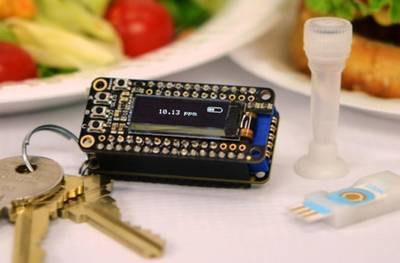
Keychain detector could catch food allergens before it's too late
_"For kids and adults with food allergies, a restaurant outing can be a fraught experience. Even when care is taken, freshly prepared or packaged meals can accidentally become cross-contaminated with an offending food and trigger a reaction. Now researchers report in the journal ACS Nano the development of a new portable allergen-detection system -- including a keychain analyzer -- that could help prevent trips to the emergency room. Most people with food allergies manage their condition by avoiding the specific nuts, fish, eggs or other products that cause a reaction, which can range from a mild rash to life-threatening anaphylaxis. But avoidance isn't always possible because food can be mislabeled or cross-contaminated. Conventional methods to detect these hidden triggers either require bulky laboratory equipment, or are slow and don't pick up on low concentrations. [...]

IBM and MIT Bet That Materials and Quantum Advances Will Supercharge AI
_"new $240 million center at MIT may help advance the field of artificial intelligence by developing novel devices and materials to power the latest machine-learning algorithms. It could, perhaps, also help IBM reclaim its reputation for doing cutting-edge AI. The project, announced by IBM and MIT today, will research new approaches in deep learning, a technique in AI that has led to big advances in areas such as machine vision and voice recognition. But it will also explore completely new computing devices, materials, and physical phenomena, including efforts to harness quantum computers—exotic but potentially very powerful new machines—to make AI even more capable. “A lot of innovation is happening using standard silicon and architectures, but what about the devices and the material science?” says Dario Gil, vice president of AI at IBM Research. “It’s an area no one is touching, and it has the potential for orders-of-magnitude improvements.” The center will also look at ways that AI can be more effectively deployed in industries like health care and security. [...]
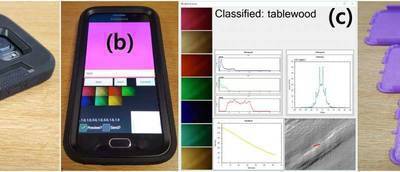
New technology could revolutionise smartphone use
_"An innovative technology, created by researchers at the University of St Andrews, can allow your smartphone to carry out a range of tasks just by recognising the surface it is sitting on. SpeCam is a program which would enable existing phones to utilize their camera function to recognise different materials they have been exposed to. This would link up with a previously created database so the phone could “understand” what type of surface it has been placed on. This offers a wide range of applications from allowing your phone to tell you where it is when you can’t find it, to programming it to take different surfaces as a trigger for action. For example if the phone rings and you place it face down on your laptop, it could send a message saying “sorry I am in a meeting” or if put inside your pocket it could suggest the caller try a different colleague. The program would also allow the way the phone is held to perform tasks, such as changing the volume on the television, or playing certain music, such as soft jazz if placed on the sofa or dance music if on the coffee table. [...]

Quantum engineers find a use for the hashtag at the nanoscale
_"A novel approach to quantum architecture is helping build a qubit Dr Maja Cassidy at Microsoft's Station Q in the University of Sydney is building a quantum computer using strange quasiparticles called Majorana fermions. In the week that the ubiquitous social media tool, the hashtag, celebrated its 10th birthday an international team of quantum physicists announced it had found a use at the nanoscale for the humble little device that has launched a million Twitter wars. It turns out that a criss-cross pattern of semiconducting nanowires is an ideal structure in which to induce some very strange quasiparticles known as Majorana fermions. This nano-hashtag structure at scales of a billionth of a metre should help the Majorana fermions be more easily manipulated into a topological quantum bit, or qubit: the building blocks for quantum computers. The advantage in using Majorana fermions in qubit infrastructure is that they are predicted to be far more robust than existing qubit technology. This means scientists developing this technology are confident it will lead to a new generation of quantum architecture allowing for a scalable, fault-tolerant universal quantum computer. [...]
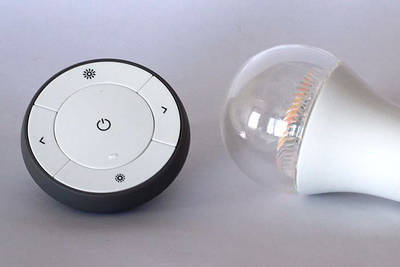
FAU researchers discover security flaws in smart home products
_"Smart home products such as lamps controlled via mobile devices are becoming ever more popular in private households. We would, however, feel vulnerable in our own four walls if strangers suddenly started switching the lights in our homes on and off. Researchers at the IT Security Infrastructures group, FAU have discovered security problems of this nature in smart lights manufactured by GE, IKEA, Philips and Osram. Philipp Morgner and Zinaida Benenson’s team managed to make connected lighting systems of different manufacturers flash for several hours with a single radio command sent from a distance of more than 100 metres away. Additionally, they were able to modify the bulbs using radio commands so that the user was unable to control them. It was even possible in certain situations change the colour or brightness of the light. [...]
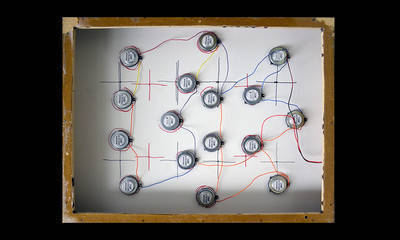
Designing a world of immersive sound
_"Imagine your new home theater features a screen that serves as an extended loudspeaker, able to radiate sound linked to moving video images. Then picture your walls and ceiling lined with flat-panel loudspeakers that double as wall-art, light panels, or ceiling tiles. What if you were able to create this totally immersive sonic space for a modest price – say a couple of thousand dollars? “This is the new audio experience that we want to give people,” says Mark Bocko, professor and chair of electrical and computer engineering at the University of Rochester. Bocko is working on the project with his PhD student, Michael Heilemann, and former PhD student David Anderson, who has graduated and joined the electrical and computer engineering department. Their work could result not only in sonically immersive home theaters, but also make airport and subway public address systems easier to understand, and give signs a “voice” of their own. [...]
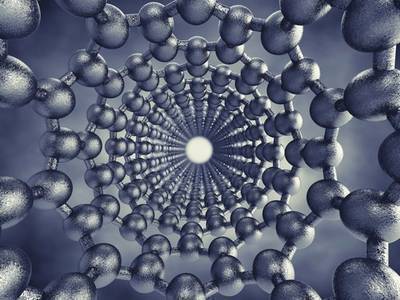
NUS scientists unravel new insights into promising semiconductor material
_"Researchers from the National University of Singapore (NUS) have established new findings on the properties of two-dimensional molybdenum disulfide (MoS2), a widely studied semiconductor of the future. In two separate studies led by Professor Andrew Wee and Assistant Professor Andrivo Rusydi from the Department of Physics at the NUS Faculty of Science, the researchers uncovered the role of oxygen in MoS2, and a novel technique to create multiple tunable, inverted optical band gaps in the material. These novel insights deepen the understanding of the intrinsic properties of MoS2 which could potentially transform its applications in the semiconductor industry. The studies were published in prestigious scientific journals Physical Review Letters and Nature Communications respectively. MoS2 - An alternative to graphene MoS2 is a semiconductor-like material that exhibits desirable electronic and optical properties for the development and enhancement of transistors, photodetectors and solar cells. Prof Wee explained, “MoS2 holds great industrial importance. [...]

Unfolding the folding mechanism of ladybug wings
_"A group of researchers at the University of Tokyo and their collaborators have figured out how ladybugs fold their wings by transplanting a transparent artificial wing onto the insect and observing its underlying folding mechanism. The study's findings, which help explain how the wings can maintain their strength and rigidity during flight, while becoming elastic for compact folding and storage on the ground, provide hints for the innovative design of a wide range of deployable structures, from satellite antennas to microscopic medical instruments to articles for daily use like umbrellas and fans. Ladybugs are highly mobile insects that can switch between walking and flying with ease and speed because they can quickly deploy and collapse their wings. Their wings consist of the hardened elytra, the forewings with the familiar spots, and the soft-membrane hindwings used for flight, which are covered and protected by the elytra. Previous studies have suggested that up-and-down movements in the abdomen and complex origami-like crease patterns on the wings play important roles in the folding process, but how the simple motion produces such an intricate folded shape remained a mystery. Ladybugs close their elytra before wing folding, preventing observation of the detailed process, and as the elytra are essential elements for folding, they also cannot be removed to reveal what lies underneath. [...]
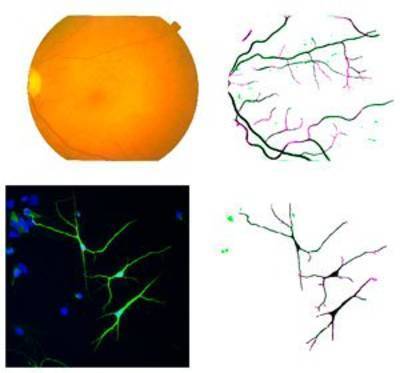
The next segment
_"A data-driven computational approach that recognizes filamentary sections of neurons and blood vessels may enhance medical diagnosis A computational tool is now available for faster and more reliable screening and diagnosis of serious vascular and neurological conditions, including glaucoma, diabetic retinopathy, and Alzheimer’s disease, in their early stages. Developed by A*STAR researchers, the software automatically segments filamentary structures, such as retinal blood vessels and neurons, in various biomedical images.¹ Clinicians and biologists often need to evaluate the morphology of filaments in biomedical images to determine the presence and severity of vascular and neurological diseases. Filaments however can present a problem: as well as crossing and overlapping, they show variable diameters and degrees of twisting. This makes filamentary sections difficult to distinguish from backgrounds and, consequently, can skew visual assessments. Several computer programs have been created to automate the segmentation process. These time-saving programs reduce human error, but their performance is typically optimized for specific tasks, which limits their use. [...]

Dormant, Yet Always-Alert Sensor Awakes Only in the Presence of a Signal of Interest
_"Here’s your task. Build a tiny sensor that detects a signature of infrared (IR) wavelengths characteristic of a hot tailpipe, a wood fire, or perhaps even a human being. Design the sensor so that it can remain dormant and unattended but always alert, even for years, without drawing on battery power. And build the sensor so that the act of detection itself can initiate the emission of a signal that alerts warfighters, firefighters, or others that a “signal-of-interest” has been detected. It’s just the sort of intelligence, reconnaissance, and surveillance (ISR) technology that can increase situational awareness while minimizing the need for potentially dangerous maintenance missions to replace run-down batteries. Online today in the journal Nature Nanotechnology, a research team at Northeastern University, led by Electrical and Computer Engineering Associate Professor Matteo Rinaldi, reports pulling off this tall order of DARPA’s Near Zero Power RF and Sensor Operation (N-ZERO) program with a device the Boston team refers to as a “plasmonically-enhanced micromechanical photoswitch.” “What is really interesting about the Northeastern IR sensor technology is that, unlike conventional sensors, it consumes zero stand-by power when the IR wavelengths to be detected are not present,” said Troy Olsson, manager of the N-ZERO Program in DARPA’s Microsystems Technology Office. [...]

First On-chip Nanoscale Optical Quantum Memory Developed
_"Smallest-yet optical quantum memory device is a storage medium for optical quantum networks with the potential to be scaled up for commercial use For the first time, an international team led by engineers at Caltech has developed a computer chip with nanoscale optical quantum memory. Quantum memory stores information in a similar fashion to the way traditional computer memory does, but on individual quantum particles—in this case, photons of light. This allows it to take advantage of the peculiar features of quantum mechanics (such as superposition, in which a quantum element can exist in two distinct states simultaneously) to store data more efficiently and securely. "Such a device is an essential component for the future development of optical quantum networks that could be used to transmit quantum information," says Andrei Faraon (BS '04), assistant professor of applied physics and materials science in the Division of Engineering and Applied Science at Caltech, and the corresponding author of a paper describing the new chip. The study appeared online ahead of publication by Science magazine on August 31. "This technology not only leads to extreme miniaturization of quantum memory devices, it also enables better control of the interactions between individual photons and atoms," says Tian Zhong, lead author of the study and a Caltech postdoctoral scholar. [...]
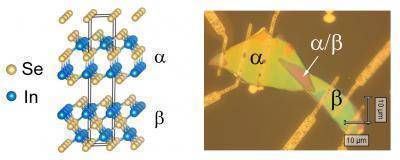
New device could turn heat energy into a viable fuel source
_"A new device being developed by Washington State University physicist Yi Gu could one day turn the heat generated by a wide array of electronics into a usable fuel source. The device is a multicomponent, multilayered composite material called a van der Waals Schottky diode. It converts heat into electricity up to three times more efficiently than silicon — a semiconductor material widely used in the electronics industry. While still in an early stage of development, the new diode could eventually provide an extra source of power for everything from smartphones to automobiles. “The ability of our diode to convert heat into electricity is very large compared to other bulk materials currently used in electronics,” said Gu, an associate professor in WSU’s Department of Physics and Astronomy. “In the future, one layer could be attached to something hot like a car exhaust or a computer motor and another to a surface at room temperature. [...]
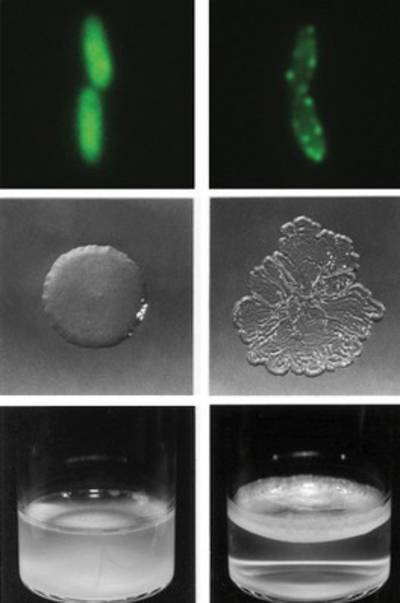
Evolution in the lab
_"Experiments with bacteria show that genes can fuse together, leading to the production of novel proteins All organisms must continuously adapt to their environment in order to survive. Such adaptation is brought about by changes in their genetic material. Together with colleagues from New Zealand, Paul Rainey from the Max Planck Institute for Evolutionary Biology in Plön has been studying the emergence of new, better adapted cell types in the laboratory. The researchers have discovered that one mechanism by which bacteria can develop new characteristics is through the fusion of two existing genes. In some of the cells, this resulted in genes coming under the control of a new promoter, resulting in the synthesis of larger quantities of the protein encoded by the gene. In another case, two neighbouring genes fused together. [...]

When Electrons Ride a Wave
_"Conventional electron accelerators have become an indispensable tool in modern research. The extremely bright radiation generated by synchrotrons, or free electron lasers, provides us with unique insights into matter at the atomic level. But even the smallest versions of these super microscopes are the size of a soccer field. Laser plasma acceleration could offer an alternative: with a much smaller footprint and much higher peak currents it could be the basis for the next generation of compact light sources. So far, the challenge with laser accelerators has been to create a reliable and stable electron beam, which is the prerequisite for possible applications. Physicists at the Helmholtz-Zentrum Dresden-Rossendorf (HZDR) have now developed a method to increase both beam stability and quality The basic principle of laser acceleration seems quite simple: A bundled, ultra-strong laser beam hits a trace of gas, which instantly creates plasma – an ionized state of matter or, in other words, a whirling mix of charged particles. [...]

Artificial Intelligence Uses Less Than Two Minutes of Videogame Footage to Recreate Game Engine
_"Game studios and enthusiasts may soon have a new tool at their disposal to speed up game development and experiment with different styles of play. Georgia Institute of Technology researchers have developed a new approach using an artificial intelligence to learn a complete game engine, the basic software of a game that governs everything from character movement to rendering graphics. Their AI system watches less than two minutes of gameplay video and then builds its own model of how the game operates by studying the frames and making predictions of future events, such as what path a character will choose or how enemies might react. To get their AI agent to create an accurate predictive model that could account for all the physics of a 2D platform-style game, the team trained the AI on a single “speedrunner” video, where a player heads straight for the goal. This made “the training problem for the AI as difficult as possible.” Their current work uses Super Mario Bros. and they’ve started replicating the experiments with Mega Man and Sonic the Hedgehog as well. The same team first used AI and Mario Bros. gameplay video to create unique game level designs. [...]
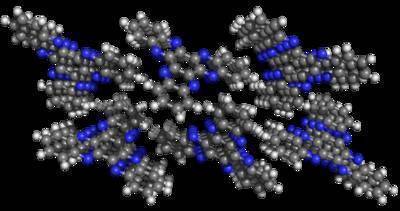
NUS researchers develop advanced material for ultra-stable, high capacity rechargeable batteries
_"Novel compound - 3Q - conducts electricity and retains energy better than other organic materials currently used in batteries A team of researchers from the National University of Singapore (NUS) has successfully designed a novel organic material of superior electrical conductivity and energy retention capability for use in battery applications. This invention paves the way for the development of ultra-stable, high capacity and environmental friendly rechargeable batteries. The study led by Professor Loh Kian Ping from the Department of Chemistry at NUS Faculty of Science was published in prestigious scientific journal Nature Energy on 8 May 2017. Challenges of rechargeable batteries Rechargeable batteries are the key energy storage component in many large-scale battery systems such as electric vehicles and smart renewable energy grids. With the growing demand of these battery systems, researchers are turning to more sustainable, environmentally friendly methods of producing them. One such method is to use organic materials as an electrode in the rechargeable battery. [...]
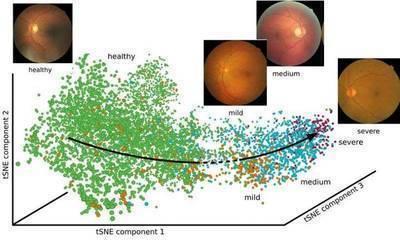
Paint by numbers: Algorithm reconstructs processes from individual images
_"Researchers at the Helmholtz Zentrum München have developed a new method for reconstructing continuous biological processes, such as disease progression, using image data. The study was published in ‘Nature Communications’. Modern life sciences generate a constantly growing amount of data in shorter and shorter cycles. Making such data controllable and suitable for evaluation is the objective of Dr. Dr. Alexander Wolf and his colleagues at the Helmholtz Zentrum München’s Institute of Computational Biology (ICB). With this in mind, the researchers are attempting to develop software that handles this evaluation. But of course there are various hurdles to clear. [...]

New Research May Improve Communications During Natural Disasters
_"Storms like Hurricane Irma and other natural disasters bring with them lots of uncertainty: where will they go, how much damage will they cause. What is certain is that no matter where they strike, natural disasters knock out power. And, no power means no internet for thousands of people in affected areas. However, researchers at the Georgia Institute of Technology are proposing a new way of gathering and sharing information during natural disasters that does not rely on the internet. Using computing power built into mobile phones, routers, and other hardware to create a network, emergency managers and first responders will be able to share and act on information gathered from people impacted by hurricanes, tornados, floods, and other disasters. “Increasingly, data gathered from passive and active sensors that people carry with them, such as their mobile phones, is being used to inform situational awareness in a variety of settings,” said Kishore Ramachandran, computer science professor at Georgia Tech. [...]
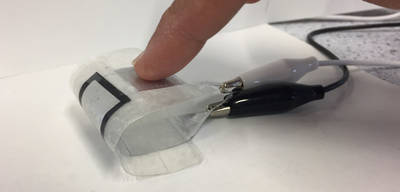
Queen's University Innovation Could Mean Flexible Batteries For Pacemakers
_"Experts at Queen’s University Belfast have designed a flexible and organic alternative to the rigid batteries that power-up medical implants. Currently, devices such as pacemakers and defibrillators are fitted with rigid and metal based batteries, which can cause patient discomfort. Dr Geetha Srinivasan and a team of young researchers from Queen's University Ionic Liquid Laboratories (QUILL) Research Centre, have now developed a flexible supercapacitor with a longer cycle life, which could power body sensors. Flexible device The flexible device is made up of non-flammable electrolytes and organic composites, which are safe to the human body. It can also be easily decomposed without incurring the major costs associated with recycling or disposing off metal based batteries. The findings, which have been published in Energy Technology and Green Chemistry, show that the device could be manufactured using readily available natural feedstock, rather than sophisticated and expensive metals or semiconductors. [...]
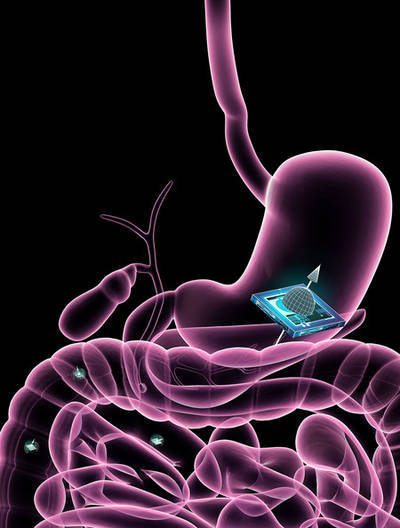
Medicine of the Future: New Microchip Technology Could Be Used to Track Smart Pills
_"Researchers at Caltech have developed a prototype miniature medical device that could ultimately be used in "smart pills" to diagnose and treat diseases. A key to the new technology—and what makes it unique among other microscale medical devices—is that its location can be precisely identified within the body, something that proved challenging before. "The dream is that we will have microscale devices that are roaming our bodies and either diagnosing problems or fixing things," says Azita Emami, the Andrew and Peggy Cherng Professor of Electrical Engineering and Medical Engineering and Heritage Medical Research Institute Investigator, who co-led the research along with Assistant Professor of Chemical Engineering and Heritage Medical Research Institute Investigator Mikhail Shapiro. "Before now, one of the challenges was that it was hard to tell where they are in the body." A paper describing the new device appears in the September issue of the journal Nature Biomedical Engineering. The lead author is Manuel Monge (MS '10, PhD '17), who was a doctoral student in Emami's lab and a Rosen Bioengineering Center Scholar at Caltech, and now works at a company called Neuralink. [...]
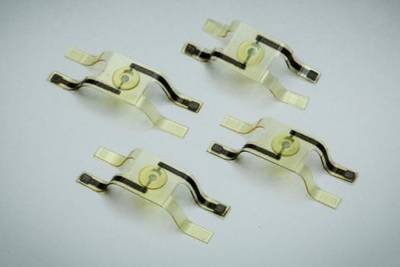
“Peel-and-go” Printable Structures Fold Themselves
_"As 3-D printing has become a mainstream technology, industry and academic researchers have been investigating printable structures that will fold themselves into useful three-dimensional shapes when heated or immersed in water. In a paper appearing in the American Chemical Society’s journal Applied Materials and Interfaces, researchers from MIT’s Computer Science and Artificial Intelligence Laboratory (CSAIL) and colleagues report something new: a printable structure that begins to fold itself up as soon as it’s peeled off the printing platform. One of the big advantages of devices that self-fold without any outside stimulus, the researchers say, is that they can involve a wider range of materials and more delicate structures. “If you want to add printed electronics, you’re generally going to be using some organic materials, because a majority of printed electronics rely on them,” says Subramanian Sundaram, an MIT graduate student in electrical engineering and computer science and first author on the paper. “These materials are often very, very sensitive to moisture and temperature. So if you have these electronics and parts, and you want to initiate folds in them, you wouldn’t want to dunk them in water or heat them, because then your electronics are going to degrade.” To illustrate this idea, the researchers built a prototype self-folding printable device that includes electrical leads and a polymer “pixel” that changes from transparent to opaque when a voltage is applied to it. [...]
Modelos 3D
Com a disponibilidade de ferramentas que permitem dar azo a nossa imaginação na criação de peças 3D e espaços como o thingiverse para as publicar, esta rubrica apresenta alguns modelos selecionados que poderão ser úteis.
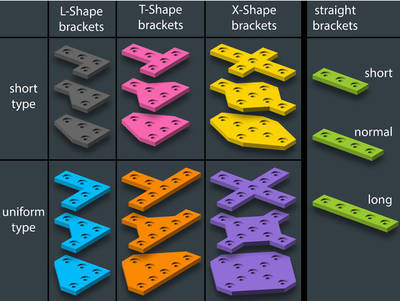
Customizable Plate Bracket for Aluminium Extrusion Profiles (Misumi 2020, 2040, 4040, ...)
"This is a customizable thing that allows you to create and print aluminum extrusion brackets for different types and sizes of extrusion profiles.I've also added the 21 brackets for 2020 and for the short side of the 2040 profile as .stl files.Aluminium Extrusion SeriesThis is part of my Aluminium Extrusions series. Follow me, if you want to be informed about a new part of this series!Customizable SettingsUse the Customizer or OpenSCAD to create your own customized set of brackets.You only need to set these few parameters to get all the 21 brackets automatically: width of mounting side of the extrusion profile (20mm for 2020 profile)length and thickness of the bracketnumber of rails (2020 has 1, 2040 has 1 and 2 rails)screw hole settings" [...]
Documentação
A documentação é parte essencial do processo de aprendizagem e a Internet além de artigos interessantes de explorar também tem alguma documentação em formato PDF interessante de ler. Todos os links aqui apresentados são para conteúdo disponibilizado livremente pelo editor do livro.

newelectronics de 12 Setembro 2017
"New Electronics is a fortnightly magazine focusing on technological innovation, news and the latest developments in the electronics sector. Downloadable as a digital page turner or pdf file, or offered as a hard copy, the New Electronics magazine is available in a format to suit you. " [...]
Projetos Maker
Diversos Projetos interessantes.

MyPlant-Informer
"stay informed about soil-measurement by using Particle Photon. Another Plant Project I have bought different seeds for the autumn, to be able to profit then in the winter time from delicious peppermint taste in the tea. In addition, still seeds of a fig tree, of which I can probably not be reaped so quickly. " [...]
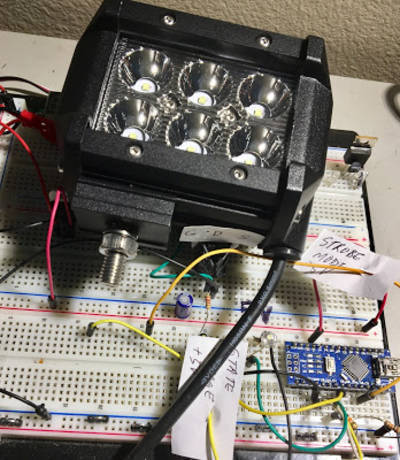
Arduino / MOSFET Controlled High Bright LED Motorcycle Light
"In our modern world, high bright LEDs can be purchased cheaply to provide low current draw auxiliary lighting to any vehicle. Then it is only a simple matter of connecting the LED to 12VDC and head down the road enjoying your new found wattage. However, there is no fun in the easy way. Follow the instructions below to build your own custom high bright LED driver. " [...]
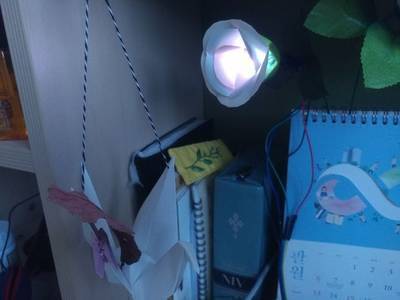
Arduino Mood Lamp With Bluetooth Module
"Hi !I'm the person who likes to make 'useless but beautiful something'. Today we'll gonna make "Arduino Mood Lamp with Bluetooth Modue".You would control it with android phone app. (I don't use android phone, but there would be the method you can control with ios app.) Let's start! :)" [...]
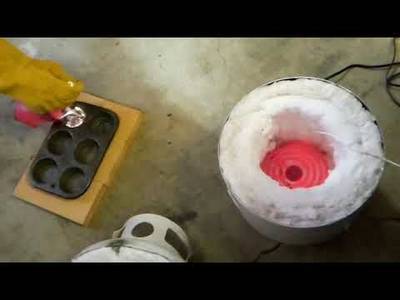
Build an Electric Foundry for Melting Aluminum (that Works on 120 VAC)
_"I've seen many projects out there for building a foundry for melting aluminum to make castings. Most are based on cumbustion furnaces (charcoal or propane). A few are electric which has many advantages. None that I have seen are as easy to build as the electric foundry furnace I will describe in this instructable and none that I have seen work effectively on 120 VAC (they require 240 VAC to reach high enough temperatures). Unfortunately 240 VAC is not available in many home workshops. See the attached video for a very quick overview of the project. [...]
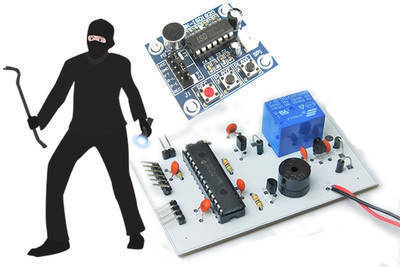
Make a Talking Security Alarm with a PIC16 and ISD1820
"Alarm circuits are common in the field of hobby electronics, typically utilizing a switch (such as a reed switch) and a speaker to produce an alarm. However, the alarm system in this project has several unusual features that will be able to fool most intruders. In this DIY Hacking project, we will make a security system that will fool intruders into thinking that someone is around! " [...]
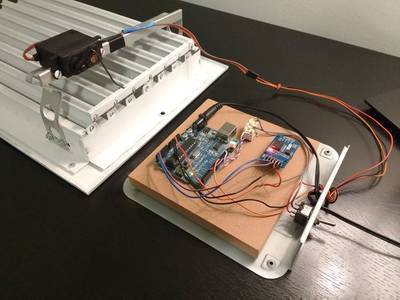
HVAC Zoning With Arduino to Improve Cooling Control
_"Control an HVAC register with a servo to improve room comfort throughout the day Like most US homes, our 1000sqft house is heated and cooled by forced air in a single zone. There is one thermostat which turns the system on or off, and all areas are fed hot or cold air at the same time. Ideally, with the airflow to all rooms balanced, every room would reach the temperature set on the thermostat, but this can't work at all times of the day. In summer, the sun's varying angle in the sky means that the east side of the house is heated more in the morning, the south walls receive most at midday, then the west walls in the late afternoon. This heat concentration means rooms facing the sun at a given time of the day will be hottest. To counteract this effect, zones can be incorporated into the ductwork. [...]
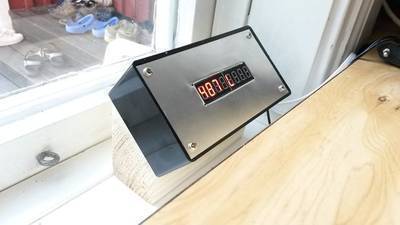
Ultrasound Tank Level Meter
_"Need to monitor the fluid level in a large diameter well, a tank, or an open container? This guide will show you how to make a sonar non-contact fluid level meter using cheap electronics! The sketch above shows an overview of what we aimed for with this project. Our summer cottage has a large-diameter well to supply drinking water for use in the house. One day, my brother and I talked about how our grandfather used to measure the water level manually in order to keep track of the water consumption and influx throughout the summer to avoid overdraft. We thought that with modern electronics we should be able to revive the tradition, but with less manual labour involved. [...]

How to Make a Professional Printed Circuit Board: the Complete Guide
"Hello everybody, today I will show you how to make professional PCB, to improve your electronic projects. Let's start ! " [...]

MQTT Alarm Control Panel for Home Assistant
"A control panel powered by Raspberry Pi 3 using a touchscreen and Android Things to communicate with Home Assistant's alarm panel over MQTT. OverviewThis project is a MQTT Alarm Control Panel for use with Home Assistant's Manual Alarm Control Panel component. This project was built using a Raspberry Pi 3 and a 7" touch screen display running Android Things. " [...]

Pyboard Hookup Guide
"The pyboard is a powerful microcontroller board designed to run MicroPython code that also happens to be conveniently compact. There is a pyboard can be sold without headers and with headers. " [...]
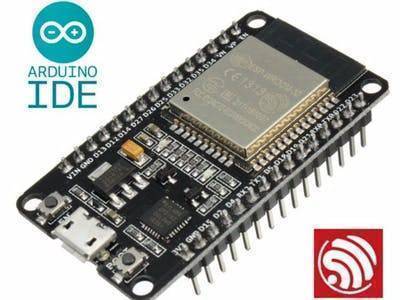
IOT Made Simple: Playing With the ESP32 on Arduino IDE
_"We will learn how to program the ESP32 on Arduino IDE, exploring its most common functions and libraries, differences, and new features. By MJRoBot. Introduction Let's explore in this tutorial, the ESP32, the fantastic newer Development Kit board for IoT use. This board, developed by Espressif, should be the NodeMCU's successor, due to its low price and great features. But is also important to point that NOT ALL libraries or functions that you are used to working with ESP8266 and/or Arduino are yet functional on this new board. Probably this will be soon, so check it regularly on ESP 32 Forum WebPage. [...]
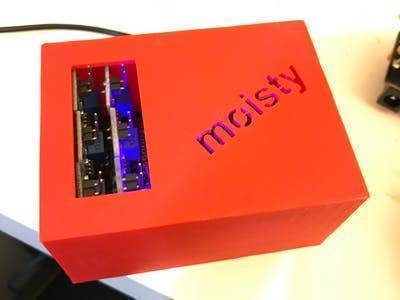
Moisty - a Plant Moisture Sensor
_"This is a 6x plant moisture sensor using Cayenne & a 3D printed case. This a project to make a device that checks up to six plants moisture levels and returns the value as a percent. I used generic soil sensors and soldered them directly to the PCB board and then the probs connect on the top. It energizes the soil sensor board, takes the analog reading, and then turns the board back off. This helps quite a bit in slowing corrosion of the probes. I designed simple case to hold it which I included. [...]

The Cardboard Computer - IO is my name
_"My goal is a 4-bit CPU using recycled cardboard substrate and Diode Transistor Logic. This will develop into an educational platform for me. Attempt to build a four bit computer using recycled, re-purposed and just plain junk as the main construction material. Why? Well, the cardboard is free as my workplace puts it in the dumpster and I do not have the funds to buy better material. A very green build indeed. [...]

Simple Audio Amplifier Using Single Transistor
"Audio Amplifier is a device which strengthen the weak signal. Usually in audio systems we use amplifiers to drive the speakers of high power rating . Now , in this Instructables you are going to see how to make an audio amplifier using single transistor to drive the speaker of 10W . " [...]
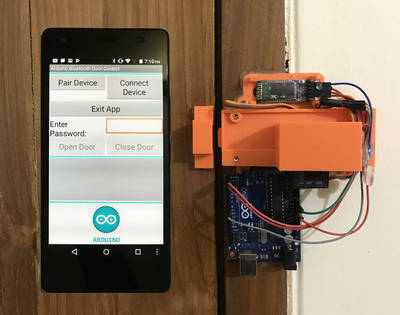
Arduino & Android Based Bluetooth Control Password Protected Door Lock (Version 2)
_"I published an instructable on Arduino & Android based DIY smart lock which can be open and closed using password sent from Android smartphone over Bluetooth two years back. The instructable become very popular and I got lots of email from the community. Here I am going to publish an updated version of my door lock. Now, the lock is fully 3D printed. This smart Lock is the secure, simple, and easy to manage your homes lock. This lock needs no keys and the lock is attached inside the door and you can control it from outside the door. [...]

DIY LiPo Charge/Protect/5V Boost Circuit
"In this video I will show you how I combined a couple of ICs in order to create a charge/protect/5V boost circuit for a single cell LiPo battery. Along the way I will show you how I designed the PCB, how I ordered it and what kind of problems occured while soldering the components and testing the circuit. Let's get started! " [...]
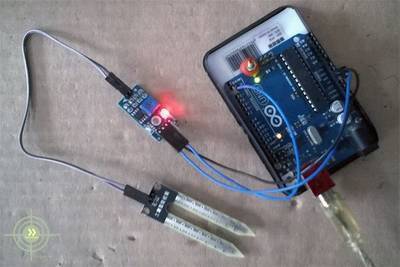
Smart Irrigation Project on Arduino
_"In this article, we are going to interface a Soil moisture sensor FC-28 with Arduino. This sensor measures the volumetric content of water inside the soil and gives us the moisture level as output. The sensor is equipped with both analog and digital output, so it can be used in both analog and digital mode. In this article, we are going to interface the sensor in both modes. So lets begin our tutorial on interfacing Arduino and Soil moisture sensor. Working of Sensor The soil moisture sensor consists of two probes which are used to measure the volumetric content of water. [...]
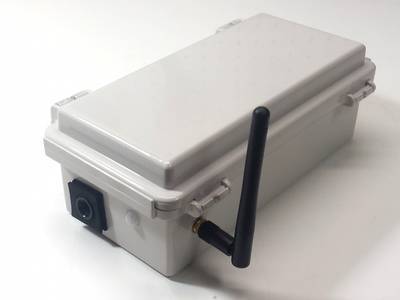
Wi-Fi Camera Trap
_"We have lots of small wildlife around our house (mostly rabbits this year) and since I have a small camera module and a cheap PIR (passive infrared) motion sensor, I thought it would be fun to make a motion triggered wi-fi camera to deploy somewhere near the house. The project is quite simple. If the PIR sensor is triggered, software on an ESP8266 wi-fi microcontroller captures an image using the ArduCAM camera module and uploads it to an image server. I wrote a very simple Node.js server that saves the uploaded images and makes them available on a gallery page for easy viewing. Nothing fancy. Here are some of the great images we captured. [...]

Trinket M0 Express Hack
_"m a huge fan of the SAMD21 boards that Adafruit is producing. What a huge step up from the ATMEGA328 or 2560. 48MHz, 32 bit ARM Cortex-M0+, and loads of flash and ram. I have several of these boards and am dabbling with CircuitPython (I finally a compelling reason to learn Python!). I have a couple/few each of Circuit Playground Express, Feather M0 Express, Gemma M0, and the most recent: the Trinket M0. Some advantages of the Gemma and Trinket boards is their small size. [...]

Simple IOT
_"IOT refers to small devices equipped with direct internet connectivity. Learn IOT top to bottom with this remote temperature sensor project. IOT stands for Internet of Things and refers to small devices equipped with direct internet connectivity, without needing an external computer. They are usually composed of a main microcontroller and an additional connectivity (eg. ESP8266 for Wifi, ENC28J60 for Ethernet) or they are complete SOC including both the processing unit and the connectivity modems in one single package. Regardless of their form or shape, these devices open new applications for remote sensing and controlling, and bring system automation to a new level of performance.Examples of such devices were presented on this blog even before IOT was coined as a buzzword. [...]
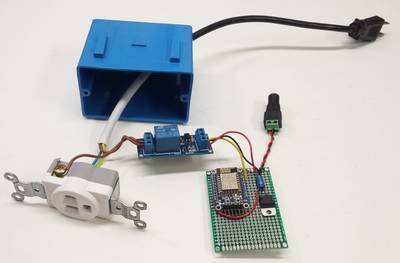
Wi-Fi IoT Electrical Outlet: Turning on a Coffee Maker Remotely
_"They say necessity is the mother of invention, and there’s no question that the need to turn on my coffee maker while still in bed is a necessity. I don’t want to wait for my coffee to brew after I go down to the kitchen in the morning. I want my coffee ready as soon as I get there. It’s not that I’m impatient, I just have lots of electronics work to do, right? Obviously, I needed a solution that would allow me to start my coffee brewing from my phone which I keep at my bedside. This is a great example of a problem in need of an IoT (Internet of Things) solution. [...]
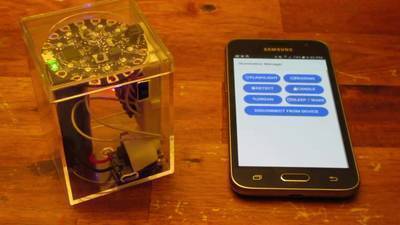
Personal Illumination Device
"What is this?This little box will light up your life, because we all need a little illumination. With the help of a tiny computer, the PID has multiple modes to make use of its bright RGB LED's: Basic flashlight (full brightness) Reading mode (a warmer light color) Sensor mode (turn on when there's low light, off in bright light, and off when totally dark) Sound visualizer Candles (flickering) Wake up / go to sleep color mode With a connection via bluetooth to your phone and using the Personal Illumination Manager app you can change modes, set brightness, etc. " [...]

Bluetooth Voice Controlled Moving Lamp
_"Bluetooth and voice control, this two topics are close to each other when it comes to Arduino. A lot of people want to make something with bluetooth, and some of them want to use voice control. There are a lot of project of bluetooth controlled, robots, cars, boats, drones and so on. And they are cool, I like them, but I prefer to make more original things, that have never been made before or at least add something new to old, well known things. When I am making this kind of projects I feel like Neil Armstrong when he was the first man on the moon :D Just kidding, but I like creating new things that have never been made before, because I can :) So what I wanted to make in this project? Basicly a lamp, everyone know what is a lamp but for last few hundreds of yeas when you wanted to move your lamp you have to make this by hand. [...]
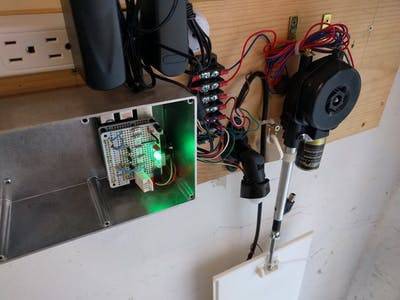
RPi 3 BLE Cat Door
_"IoT Cat Door using a Raspberry Pi 3, Node-Red and BLE tracking tags! The goal of this project is to build an IoT style motorized pet door so we can control which animals can come into the house. For this we are using BLE tags attached to the animals (cats) and the built-in Bluetooth module on the Raspberry Pi 3 which scans for the tags. We also have some indicator LEDs on the Raspberry Pi 3 for troubleshooting what state the door is supposed to be in. The Node-RED BLE Scan node continuously scans for BLE advertisements. If it sees one that matches the device name and minimum RSSI it will open the pet door, and after a timeout period it will close the door. [...]

Obstacle Avoiding Robot Using Ultrasonic Sensors
"We are going to build a Obstacle Avoiding robot using Ultrasonic sensors(HC SR 04) and Arduino Uno board.Robot moves avoiding obstacles and choosing the best way to follow by sensors. " [...]
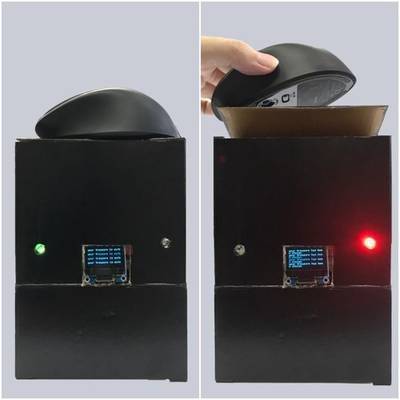
Burglar Alarm Device
"In this project, we are going to create a simple alarm machine which will alert the owner if someone has stolen his or her property. The red LED will blink when the crash sensor detects that the object has been taken away. Otherwise, the green LED will light up continuously. The OLED will display the status of the machine. " [...]
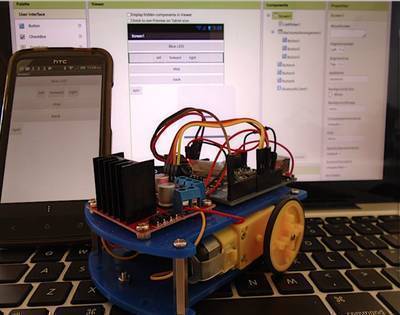
Mobile Phone Controlled Robot
"This Robot is great for a class project as it is cheap an easy to make. You can add to it and program it to do all sorts of things, and in this Instructable Ill show you how to drive it from your phone using Bluetooth. " [...]
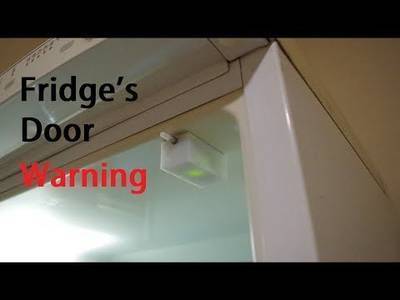
Fridge's Door Warning (easy Schematic)
"make an easy fridge's door warning with simple parts" [...]
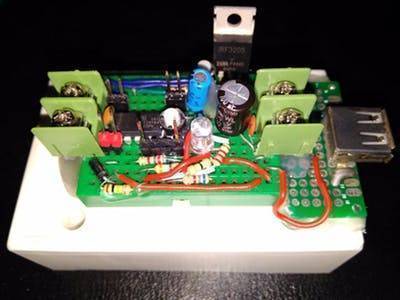
@Tiny Programmable Sleep Controller
_"A system to truly control the power saving for any project that is created using development boards, which isn't power saving in nature ! The Idea Almost every modern microcontroller comes with power saving / sleep functions to reduce power consumption of a system. This is useful because it provides longer battery life, reduce carbon emission ( think about billions of microcontrollers ) and save cost. But there is a problem, when you built a project using a development board rather than just using the bare microcontroller, sleep is not going to save power. Most development boards have a power LED which is always on, there are debugging circuits and sensors on board which consumes power even though the primary mcu is sleeping. Another culprit is on board voltage regulator which draws quiescent current all the time. [...]
Face Tracking Arduino Robot
"hello guys... our new project on robotics based on arduino ... face tracking arduino robot using two servo motors with arduino... , in this project we are going to implement face detection by blending in the power of Arduino and Android. In this project, the mobile camera will move along with your face with the help of servos. The advantage of using the Android Mobile Phone here is that you do not need to invest on a camera module and the whole image detection work can be done in the phone itself, you do not need your Arduino connected to your computer for this to work. Here we have used Bluetooth Module with Arduino to communicate with Mobile wirelessly. The Android application used in this project was created using Processing Android, you can either directly install the application by downloading the APK file (read further for link) or put on your programming app. By the step of this tutorial you will have a Mini Tilt and Span Robotic Arm that could track your face and move along with it... now lets go..." [...]

Intro: Password & Lock
"This project is a simple security system: Password System.with 4 digits. It is consist of 3 LEDs that reflect the state security: RED LED: Closed. GREEN LED: Open. Yello LED: Key press LED. Default Password is 1234 with the ability to reset the it. Once you entered the old password you can press " * " to start the " Reset Process"" [...]

Lets Build a LED CUBE
"Hello everyone! . In this instructable I'm going to show you how I built my 4X4X4 Led Cube. For this cube I used Blue LEDS and NPN Transistors to drive ground signals to the layers of the cube to make coding easier. I hope you are all going to like this instructable. " [...]

Arduino 4 Leg Robot Control Via Bluetooth
"lets make a 4 leg robot with arduino. " [...]

Arduino Weather Monitor
"This weather monitor will consist of 2 dht11 sensors, which will sense indoor and ourdoor temperature and humidity and an ml8511 uv sensor, with onboard voltage regulator. " [...]

Pedal PI - Raspberry Pi ZERO Guitar Pedal
_"Pedal-Pi is a lo-fi programmable guitar pedal that works with the Raspberry Pi ZERO Board. The project is totally Open Source & Open Hardware and made for hackers, programmers and musicians that want to experiment with sounds and learn about digital audio. You can code your own effects using standard C and get inspiration from the ready-to-use effects from the forum, like the Clean/Transparent, Booster/Volume, Distortion, Fuzz, Delay, Echo, Octaver, Reverb, Tremolo, Looper, etc. The project was created with the aim of having fun and learning about guitar pedals. If you want to program digital audio effects in C without deep knowledge on DSP languages or electronics, this pedal is for you. But take also into consideration that it is only 12 bits and does not feel like a finished pedal that you could buy in a shop. [...]

Mini Pinball Table with Gemma M0
_"It's a lot of fun to play virtual pinball on an iPad! My favorite game is Pinball Arcade which features excellent physics and a huge host of classic table reproductions, from "Aadams Family Pinball" to "Theatre of Magic" and more. But, playing with the virtual, screen-tapping controls isn't as satisfying as hitting real flipper buttons. Let's solve that! This Mini Pinball Table is pretty straightforward to build, using slotted aluminum extrusion and hardware. And, the circuit to make it all go is really easy to make -- it requires no soldering, just plug wires and clip alligator clips to the buttons and a Gemma M0 microcontroller, which takes care of the rest! [...]
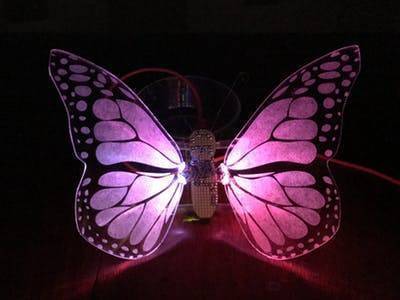
Butterfly Alarm Clock
_"This alarm clock is an attempt to get our toddler to stay quiet in the morning while we try to continue sleeping. My wife asked me, "do you mind if I spend $27 on a toddler alarm clock?" When I figured out what such an alarm clock does, I decided I could make that from parts I had in my pile. Wings Since I have access to a laser cutter at work, I got some 1/4" acrylic and cut/etched the wings. The design came from pixabay and has a creative commons license. https://pixabay.com/en/animal-butterfly-design-insect-1297939/ I took one wing, created a vector outline for the cut and copied it for the second wing. [...]
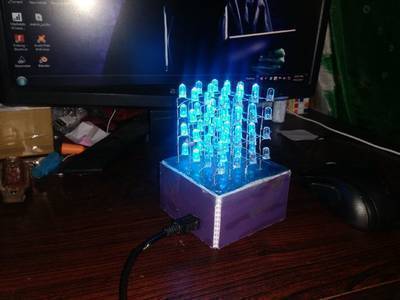
444 LED CUBE
" A SIMPLE 4*4*4 LED CUBE USING ARDUINO NANO" [...]
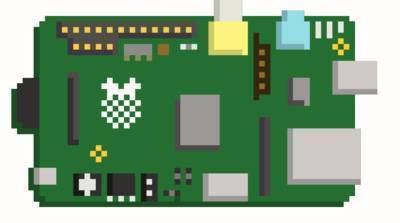
Take These Steps to Secure Your Raspberry Pi Against Attackers
"Raspberry Pi boards are fantastic for any project — they’re cheap, easy to use, can run a wide range of possible operating systems, and provide programmable GPIO pins as well as multi-core CPU availability and multiple USB ports. You can use Raspberry Pi boards for all kinds of automation and information gathering projects. But, if you are not careful, your little hobby project might result in a security risk that acts as an entry point into your network. They can’t perform secure booting such as ARM Trustzone, and the SD card and operating system are not easily encrypted. Follow these security tips to safeguard your Pi and other devices on your network. " [...]
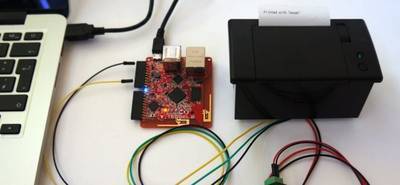
How to Build Your Own Fax Machine with Tessel, JavaScript and Twilio
_"The death of fax has been greatly exaggerated! Twilio Programmable Fax allows you to work with faxes using the REST APIs that you are already familiar with as a developer. Instead of loading piles of paper sheets into a machine tray we can send and receive a fax in the cloud. But… what about those beautiful physical fax machines? Remember the buzzing noise, the blinking lights and the minutes spent waiting for it to finish printing a page? While you could go out and buy a fax machine and get a landline, neither would be fun. [...]
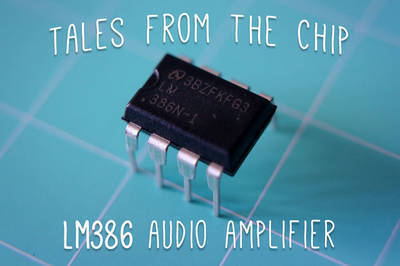
Tales From the Chip: LM386 Audio Amplifier
_"Audio is one of the most entertaining, time-consuming and (eventually) wallet-draining ways of learning about and falling in love with electronics. Reproducing, recording and amplifying audio gets you up close and personal with the electrons rocketing through your circuits. Which brings us to what is in my mind the best kickoff point in learning about audio electronics - amplification. If you have access to an old speaker and an audio source (such as your phone or MP3 player) you can easily start building low cost circuits that have immediate results - music blasting into the airwaves. Chip AmpsIt used to be that audio amplification depended on large numbers of discrete components or power-hungry vacuum tubes to get decent sound from a source to a speaker. Like everywhere else, integrated circuits have made the barrier to entry much lower, letting us use any number of op-amps designed specifically for audio. [...]
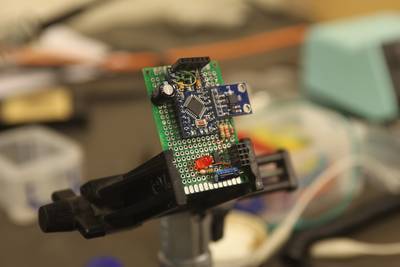
COSMOS and Arduino: The $20 Telemetry System
_"I built an inexpensive, PC based, wireless telemetry system using COSMOS and Arduino. This system measures 3-axis accelerations of a race car allowing engineers to verify and tune the suspension design. Data acquisition is an integral part of the engineering process. Automated data collection, processing, and presentation will streamline design iteration and reveal previously undetectable issues. Simply watching your design function correctly isn't an indication that it's functioning efficiently. The problem with telemetry is it's difficult to build and expensive to buy. [...]

Building a Circuit to Detect High Frequencies: The Bat Detector!
_"Bats come out at night and can be difficult to spot—but with this bat detector, you will be able to track them down! While some bats do make audible clicks, most produce inaudible clicks that are between 20kHz and 200kHz. Since vision is severely restricted at night and in caves, bats rely on echolocation, which works in a nearly identical fashion to submarine SONAR. Essentially, the bat generates a high-frequency click that bounces off surrounding objects. The reflected click is detected by the bat and this is enough information for the bat to determine the size and type of object nearby, as well as the distance from it. Luckily for us, these sound waves diffract and spread in mostly all directions—so if we can create a circuit that can detect these clicks then we should be able to track bats! [...]
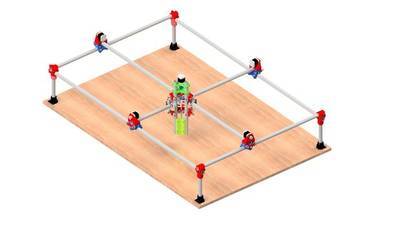
Cheap Scalable Arduino CNC (Plotter, Mill, 3D Printer...)
_"In this Instructable I'll show you how to make a cheap scalable CNC machine controlled by Arduino. My printer has a usable volume of 1500x1000x200mm. It will provide a computer controlled plate where you can add any kind of tool for your application: laser, mill, drilling machine, 3D printer head, pencil THIS IS MY FIRST INSTRUCTABLE, PLEASE VOTE IT IN THE First Time Author Contest!!! In order to maximize customization capabilities and reduce costs: Most parts are 3D printed Open source hardware / software Tube profiles work as RailsIf you are looking for a CNC but dont want a single purpose thousand-dollar machine, this is your project!! Be sure to watch the video above, and if you like it please consider subscribing to my channel which has been recently created and will be updated with new amazing projects. Before starting you should know the usable length, width and height you want for your machine. [...]
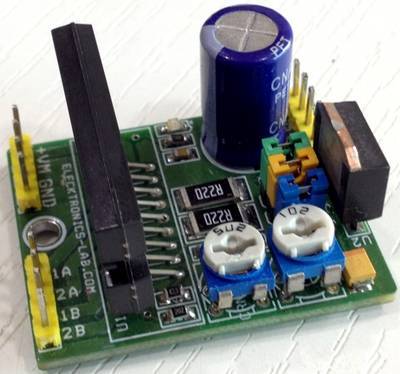
2.5A 2Phase Micro-Stepping Stepper Motor Driver
_"2 Phase stepping motor driver is a tiny board based on STK682-010 hybrid IC from ON semiconductor and it can deliver current up to 2.5Amp and has supply up to 32V DC. It has multiple micro-stepping: Full step, 1/2th Step, 1/4th Step, 1/8th Step, 1/16th Step, 1/32th Step, 1/64th Step, 1/128th Step. PR1 trimmer potentiometer is provided to set the decay, 3.5V Slow Decay, 1.1V to 3.1V Mixed Decay, 0.8V-1V Fast Decay, and PR2 Trimmer Potentiometer provided to set the Current. Chopping frequency set to 83.3 KHz with the help of capacitor C5 100PF. Micro-Stepping can be set with the help of jumper J1, J2, J3. U2 provides 5V DC for logic circuit. [...]
That's all Folks!


